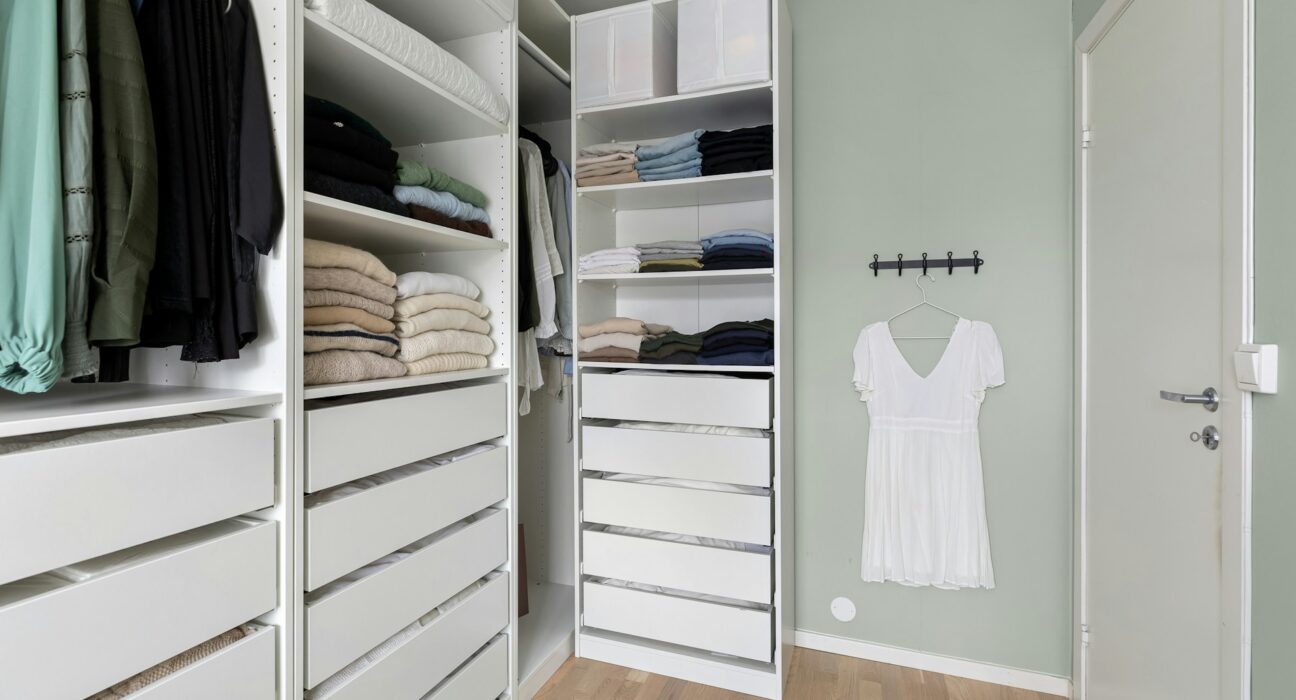As a mom, you’ve probably experienced that familiar morning panic: standing in front of a full closet, running late, with absolutely nothing to wear. You grab the same reliable outfit again, promising yourself you’ll figure out something different tomorrow. But tomorrow comes with the same scenario, and suddenly you’re stuck in a style rut that feels impossible to escape.
The solution isn’t buying more clothes or spending hours planning outfits. Instead, it’s about creating a strategic wardrobe system that gives you endless variety with fewer pieces. This approach, known as building a capsule closet, transforms how you think about getting dressed while supporting ethical fashion choices.
Many moms believe that avoiding repetitive outfits requires an enormous wardrobe. The reality is quite different. With the right foundation pieces and smart outfit planning strategies, you can create dozens of unique looks from a carefully curated collection. This method saves time, reduces decision fatigue, and helps you feel confident in what you’re wearing every single day.
Building Your Foundation
Start With Your Lifestyle Needs
Before selecting any clothing pieces, analyze your weekly routine. Do you spend most days at home with young children, work in an office environment, or juggle between school pickups and professional meetings? Your lifestyle dictates which types of clothing deserve the most space in your closet.
Create a simple breakdown of your typical week. Perhaps 40% of your time requires comfortable casual wear, 30% needs polished everyday pieces, 20% calls for professional attire, and 10% involves special occasions. This ratio becomes your shopping guide and helps prevent impulse purchases that don’t serve your actual needs.
Choose Your Color Foundation
Successful outfit planning begins with a cohesive color palette. Select three neutral colors that complement your skin tone and personal style preferences. These might include navy, cream, and gray, or perhaps camel, white, and olive green. These neutrals form the backbone of your capsule closet.
Add two accent colors that coordinate with your neutrals and reflect your personality. These could be a rich burgundy and soft pink, or maybe a vibrant coral and deep teal. This five-color system ensures that nearly every piece in your wardrobe coordinates with multiple other items, exponentially increasing your outfit combinations.
Invest in Quality Basics
Focus your budget on well-made basics that can handle frequent wear and washing. Look for pieces made from natural fibers like cotton, wool, and linen, which tend to maintain their shape and appearance longer than synthetic alternatives.
Essential basics include well-fitting jeans in a dark wash, a crisp white button-down shirt, a comfortable blazer, a simple sweater, and a versatile dress. These items serve as the foundation for countless outfits and justify spending more money on higher-quality versions.
Maximizing Outfit Variety
Master the Art of Layering
Layering transforms basic pieces into completely different looks while extending the wearability of your clothes across seasons. A simple dress becomes three distinct outfits when worn alone, with a cardigan, or under a blazer with boots.
Practice layering combinations during your free time rather than rushed mornings. Try pairing a tank top with a button-down shirt worn open, then add a lightweight scarf for a third variation. Document these combinations with photos so you can recreate them easily later.
Strategic Accessory Planning
Accessories multiply your outfit options without requiring closet space or significant financial investment. A basic black dress paired with sneakers and a denim jacket creates a casual weekend look, while the same dress with heels and statement jewelry works for date night.
Build a small collection of versatile accessories: a structured handbag, a casual crossbody bag, several scarves in your color palette, and jewelry pieces that can be mixed and matched. These items breathe new life into familiar clothing combinations.
Weekly Outfit Planning Sessions
Dedicate 15 minutes each Sunday to planning the upcoming week’s outfits. Check your calendar for special events, consider the weather forecast, and lay out complete looks including accessories and shoes. This small time investment eliminates morning stress and ensures you never repeat the same outfit back-to-back.
Use your phone to photograph each planned outfit, creating a visual reference that speeds up your morning routine. Over time, this photo collection becomes a personal style database you can reference for future outfit planning sessions.
Embracing Sustainable Choices
Quality Over Quantity Shopping
Ethical fashion starts with buying fewer, better-made pieces that last for years rather than seasons. Before purchasing any new item, apply the “cost per wear” calculation. A $100 blazer worn twice monthly for two years costs approximately $2 per wear, making it an excellent investment compared to a $30 blazer that falls apart after six months.
Research brands that prioritize fair labor practices, sustainable materials, and transparent manufacturing processes. While these pieces often cost more upfront, they align with ethical fashion principles and typically offer superior longevity.
Seasonal Rotation Strategies
Instead of maintaining a year-round wardrobe, rotate seasonal pieces in and out of your active closet. Store off-season items in bins or garment bags, making room for current weather-appropriate clothes while preserving the lifespan of stored pieces.
This rotation system helps you rediscover forgotten items and creates excitement around “new” pieces when seasons change. It also prevents your closet from becoming overcrowded, making daily outfit selection easier and more enjoyable.
Mindful Shopping Habits
Before adding any new piece to your wardrobe, identify at least three existing items it will coordinate with. This simple rule prevents impulse purchases and ensures every new addition enhances your outfit planning capabilities rather than creating isolated pieces that rarely get worn.
Consider implementing a waiting period for non-essential purchases. Add desired items to a wishlist and revisit after 30 days. Often, the initial excitement fades, saving you money and closet space while supporting more intentional consumption patterns.
Making It Work Long-Term
Regular Wardrobe Audits
Schedule quarterly reviews of your capsule closet to identify pieces that aren’t earning their space. Items worn less than four times per season should be evaluated for removal, donation, or alteration. This practice keeps your wardrobe fresh and functional while preventing the accumulation of unworn clothes.
During these audits, also note gaps in your outfit planning options. Perhaps you need one more casual top or a dressier shoe option. These identified needs guide future purchases and prevent random shopping that doesn’t serve your overall wardrobe strategy.
Adapting to Life Changes
Your capsule closet should evolve with your lifestyle. A mom returning to work after maternity leave needs different pieces than someone transitioning to full-time parenting. Regularly assess whether your current wardrobe serves your actual life rather than clinging to pieces from previous chapters.
This flexibility prevents the frustration of forcing outdated clothing into current situations. Embrace these transitions as opportunities to refine your style and create a wardrobe that truly supports your daily life.
Your Path to Effortless Style
Creating a wardrobe that offers variety without repetition requires initial planning but delivers long-term simplicity. Start by auditing your current closet, identifying your most-worn and best-fitting pieces, and building around those successful items.
Remember that developing your personal capsule closet system takes time and experimentation. Be patient with the process and allow yourself to make adjustments as you discover what works best for your lifestyle, body, and preferences. The goal isn’t perfection but rather creating a sustainable approach to getting dressed that leaves you feeling confident and put-together every day.
Begin this week by selecting five pieces from your current wardrobe and challenging yourself to create seven different outfits using only those items. This exercise demonstrates the power of strategic outfit planning and motivates you to continue building a more intentional approach to your daily style choices.







